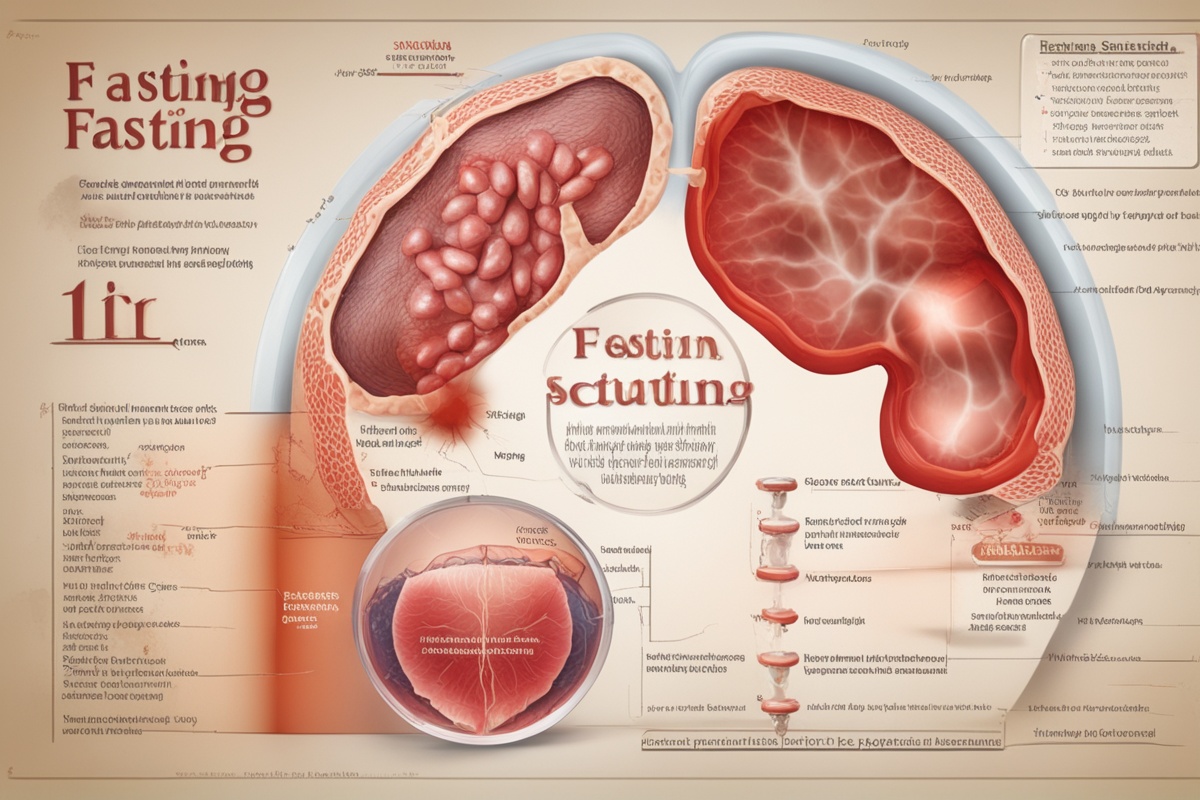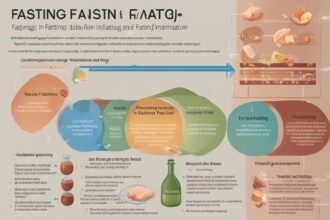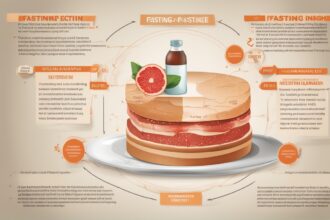Hey there, health enthusiasts! If you’re on a journey to improve your well-being, you’ve likely heard about the incredible benefits of fasting. From weight loss to mental clarity, fasting has taken the wellness world by storm. But did you know that fasting can also play a significant role in reducing inflammation in the body? Chronic inflammation is often dubbed the “silent killer,” linked to conditions like heart disease, diabetes, and autoimmune disorders. In this post, we’re diving deep into the connection between fasting and inflammation, offering practical fasting tips to help you harness these benefits. Whether you’re a seasoned faster or just curious about intermittent fasting benefits, stick around for science-backed insights and actionable advice to optimize your health.
What Is Inflammation, and Why Should You Care?
Inflammation is your body’s natural response to injury or infection. Think of it as your immune system’s way of protecting you—whether it’s a cut on your finger or a viral bug, inflammation helps heal and fight off invaders. However, there’s a darker side to this process. Chronic inflammation, when your body stays in a low-grade inflammatory state for months or years, can wreak havoc. It’s been linked to serious health issues like arthritis, cardiovascular disease, and even cancer (Harvard Medical School, 2020). Stress, poor diet, and a sedentary lifestyle are often culprits behind this persistent inflammation. So, where do fasting tips come in? Emerging research suggests that fasting might help dial down this inflammatory response, offering a natural way to support your body’s healing mechanisms.
The Science Behind Fasting and Inflammation
fasting tips into your routine could be a game-changer for managing chronic inflammation.
One fascinating study found that intermittent fasting, like the 16:8 method (fasting for 16 hours and eating within an 8-hour window), lowered inflammatory markers such as C-reactive protein (CRP) in participants over just a few weeks (Moro et al., 2016). While more research is needed, these findings highlight the potential of fasting strategies to combat inflammation naturally. It’s not just about skipping meals—it’s about giving your body a break to reset and heal.
Types of Fasting to Combat Inflammation
Not all fasting methods are created equal, and choosing the right one can make a big difference in reaping those anti-inflammatory benefits. If you’re new to fasting, don’t worry—there are plenty of approaches to fit your lifestyle. Here are some popular fasting methods that align with reducing inflammation, along with fasting tips to get started:
- Intermittent fasting (IF): This includes plans like 16:8 or 5:2 (eating normally for 5 days and restricting calories on 2 days). IF is beginner-friendly and has shown promise in reducing inflammation (Patterson & Sears, 2017).
- Time-Restricted Eating (TRE): Similar to IF, TRE limits your eating window to 6–10 hours daily. It’s less about calorie restriction and more about syncing with your body’s circadian rhythm.
- Extended Fasting: This involves fasting for 24–72 hours or more. While it’s more intense, extended fasts may enhance autophagy and inflammation reduction (Longo & Mattson, 2014). Always consult a healthcare provider before trying this.
- Alternate-Day Fasting (ADF): You alternate between normal eating days and days with minimal calorie intake. It’s a bit tougher but can yield significant health benefits over time.
Each method has its perks, so experiment with what feels sustainable. Remember, consistency with fasting strategies often trumps intensity when you’re aiming for long-term inflammation control.
Practical Fasting Tips to Reduce Inflammation
Now that you understand the connection between fasting and inflammation, let’s talk about how to make fasting work for you. It’s not just about skipping meals—there are ways to maximize the anti-inflammatory effects while keeping things safe and manageable. Here are some actionable fasting tips to guide you:
- Start Slow: If you’re new to fasting, don’t jump into a 24-hour fast right away. Begin with a 12:12 schedule (12 hours fasting, 12 hours eating) and gradually increase your fasting window.
- Stay Hydrated: Drink plenty of water during fasting periods. Dehydration can stress your body and potentially increase inflammation, so keep a water bottle handy.
- Focus on Nutrient-Dense Foods: When you break your fast, prioritize anti-inflammatory foods like leafy greens, fatty fish, nuts, and berries. Avoid processed sugars and trans fats that can spike inflammation.
- Listen to Your Body: Fasting isn’t one-size-fits-all. If you feel dizzy or overly fatigued, scale back and consult a professional. Your health comes first.
- Time Your Workouts: Light exercise during fasting, like walking or yoga, can enhance anti-inflammatory effects. Avoid intense workouts on fasting days if you’re new to this.
These fasting tips aren’t just about cutting calories—they’re about creating a holistic approach to wellness. Pair fasting with a balanced lifestyle, and you’ll likely notice improvements in how you feel over time.
Who Should Be Cautious with Fasting?
While fasting offers impressive benefits for reducing inflammation, it’s not for everyone. Certain groups should approach fasting with caution or avoid it altogether. If you have underlying health conditions like diabetes, eating disorders, or are pregnant or breastfeeding, fasting could pose risks (Harvard Medical School, 2020). Always chat with your doctor or a dietitian before starting any fasting regimen, especially if you’re on medications that require food intake. Even with the best fasting tips, safety should be your top priority. For most healthy adults, fasting is generally safe when done mindfully, but personalized advice can help you avoid pitfalls.
Other Lifestyle Factors to Support Fasting Benefits
Fasting alone won’t magically erase inflammation if other aspects of your life are out of balance. To truly maximize the intermittent fasting benefits for inflammation, consider weaving in complementary habits. Stress management, for instance, is huge—chronic stress pumps out cortisol, a hormone that can fuel inflammation (Mayo Clinic, 2019). Practices like meditation or deep breathing can pair beautifully with fasting to keep your body in a calmer state. Sleep is another biggie; poor sleep quality can undo the anti-inflammatory perks of fasting. Aim for 7–9 hours of quality rest nightly. And don’t forget movement—regular, moderate exercise supports the same cellular repair processes that fasting triggers. Think of fasting as one piece of a larger wellness puzzle, and use these fasting strategies alongside other healthy choices for the best results.
In wrapping up, it’s clear that fasting holds incredible potential for tackling chronic inflammation, a root cause of many modern health issues. By integrating practical fasting tips into your routine—whether through intermittent fasting, time-restricted eating, or other methods—you can give your body the chance to reset and heal. The science is promising, showing reductions in inflammatory markers and boosts in cellular repair processes like autophagy. But remember, fasting isn’t a quick fix; it works best when paired with a balanced diet, stress management, and proper rest. Start small, stay consistent, and always prioritize your safety by consulting professionals if you’re unsure. Here’s to using fasting strategies to feel your best and keep inflammation at bay!
References
- Bagherniya, M., Butler, A. E., Barreto, G. E., & Sahebkar, A. (2018). The effect of fasting or calorie restriction on autophagy induction: A review of the literature. Ageing Research Reviews, 47, 183–197. https://doi.org/10.1016/j.arr.2018.08.004
- Harvard Medical School. (2020). Understanding acute and chronic inflammation. Harvard Health Publishing. https://www.health.harvard.edu/staying-healthy/understanding-acute-and-chronic-inflammation
- Longo, V. D., & Mattson, M. P. (2014). Fasting: Molecular mechanisms and clinical applications. Cell Metabolism, 19(2), 181–192. https://doi.org/10.1016/j.cmet.2013.12.008
- Mayo Clinic. (2019). Stress management: Chronic stress puts your health at risk. https://www.mayoclinic.org/healthy-lifestyle/stress-management/in-depth/stress/art-20046037
- Moro, T., Tinsley, G., Bianco, A., Marcolin, G., Pacelli, Q. F., Battaglia, G., … & Paoli, A. (2016). Effects of eight weeks of time-restricted feeding (16/8) on basal metabolism, maximal strength, body composition, inflammation, and cardiovascular risk factors in resistance-trained males. Journal of Translational Medicine, 14(1), 290. https://doi.org/10.1186/s12967-016-1044-0
- Patterson, R. E., & Sears, D. D. (2017). Metabolic effects of intermittent fasting. Annual Review of Nutrition, 37, 371–393. https://doi.org/10.1146/annurev-nutr-071816-064634






